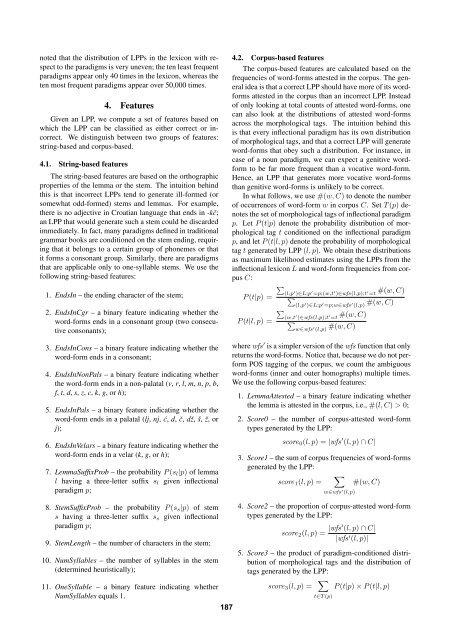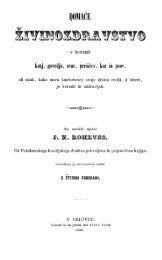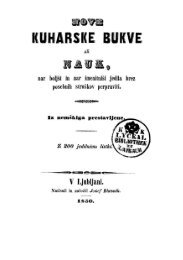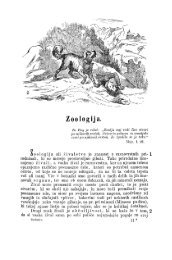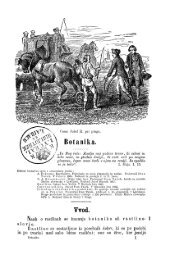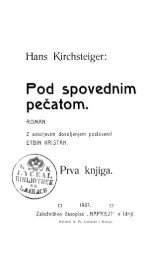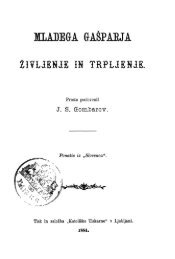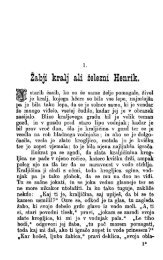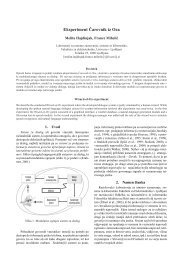Proceedings - Natural Language Server - IJS
Proceedings - Natural Language Server - IJS
Proceedings - Natural Language Server - IJS
Create successful ePaper yourself
Turn your PDF publications into a flip-book with our unique Google optimized e-Paper software.
noted that the distribution of LPPs in the lexicon with respect<br />
to the paradigms is very uneven; the ten least frequent<br />
paradigms appear only 40 times in the lexicon, whereas the<br />
ten most frequent paradigms appear over 50,000 times.<br />
4. Features<br />
Given an LPP, we compute a set of features based on<br />
which the LPP can be classified as either correct or incorrect.<br />
We distinguish between two groups of features:<br />
string-based and corpus-based.<br />
4.1. String-based features<br />
The string-based features are based on the orthographic<br />
properties of the lemma or the stem. The intuition behind<br />
this is that incorrect LPPs tend to generate ill-formed (or<br />
somewhat odd-formed) stems and lemmas. For example,<br />
there is no adjective in Croatian language that ends in -kč;<br />
an LPP that would generate such a stem could be discarded<br />
immediately. In fact, many paradigms defined in traditional<br />
grammar books are conditioned on the stem ending, requiring<br />
that it belongs to a certain group of phonemes or that<br />
it forms a consonant group. Similarly, there are paradigms<br />
that are applicable only to one-syllable stems. We use the<br />
following string-based features:<br />
1. EndsIn – the ending character of the stem;<br />
2. EndsInCgr – a binary feature indicating whether the<br />
word-forms ends in a consonant group (two consecutive<br />
consonants);<br />
3. EndsInCons – a binary feature indicating whether the<br />
word-form ends in a consonant;<br />
4. EndsInNonPals – a binary feature indicating whether<br />
the word-form ends in a non-palatal (v, r, l, m, n, p, b,<br />
f, t, d, s, z, c, k, g, or h);<br />
5. EndsInPals – a binary feature indicating whether the<br />
word-form ends in a palatal (lj, nj, ć, d, č, dˇz, ˇs, ˇz, or<br />
j);<br />
6. EndsInVelars – a binary feature indicating whether the<br />
word-form ends in a velar (k, g, or h);<br />
7. LemmaSuffixProb – the probability P (sl|p) of lemma<br />
l having a three-letter suffix sl given inflectional<br />
paradigm p;<br />
8. StemSuffixProb – the probability P (ss|p) of stem<br />
s having a three-letter suffix ss given inflectional<br />
paradigm p;<br />
9. StemLength – the number of characters in the stem;<br />
10. NumSyllables – the number of syllables in the stem<br />
(determined heuristically);<br />
11. OneSyllable – a binary feature indicating whether<br />
NumSyllables equals 1.<br />
187<br />
4.2. Corpus-based features<br />
The corpus-based features are calculated based on the<br />
frequencies of word-forms attested in the corpus. The general<br />
idea is that a correct LPP should have more of its wordforms<br />
attested in the corpus than an incorrect LPP. Instead<br />
of only looking at total counts of attested word-forms, one<br />
can also look at the distributions of attested word-forms<br />
across the morphological tags. The intuition behind this<br />
is that every inflectional paradigm has its own distribution<br />
of morphological tags, and that a correct LPP will generate<br />
word-forms that obey such a distribution. For instance, in<br />
case of a noun paradigm, we can expect a genitive wordform<br />
to be far more frequent than a vocative word-form.<br />
Hence, an LPP that generates more vocative word-forms<br />
than genitive word-forms is unlikely to be correct.<br />
In what follows, we use #(w, C) to denote the number<br />
of occurrences of word-form w in corpus C. Set T (p) denotes<br />
the set of morphological tags of inflectional paradigm<br />
p. Let P (t|p) denote the probability distribution of morphological<br />
tag t conditioned on the inflectional paradigm<br />
p, and let P (t|l, p) denote the probability of morphological<br />
tag t generated by LPP (l, p). We obtain these distributions<br />
as maximum likelihood estimates using the LPPs from the<br />
inflectional lexicon L and word-form frequencies from corpus<br />
C:<br />
<br />
(l,p<br />
P (t|p) =<br />
′ )∈L;p ′ =p;(w,t ′ )∈wfs(l,p);t ′ =t #(w, C)<br />
<br />
(l,p ′ )∈L;p ′ =p;w∈wfs ′ (l,p) #(w, C)<br />
<br />
(w,t<br />
P (t|l, p) =<br />
′ )∈wfs(l,p);t ′ =t #(w, C)<br />
#(w, C)<br />
<br />
w∈wfs ′ (l,p)<br />
where wfs ′ is a simpler version of the wfs function that only<br />
returns the word-forms. Notice that, because we do not perform<br />
POS tagging of the corpus, we count the ambiguous<br />
word-forms (inner and outer homographs) multiple times.<br />
We use the following corpus-based features:<br />
1. LemmaAttested – a binary feature indicating whether<br />
the lemma is attested in the corpus, i.e., #(l, C) > 0;<br />
2. Score0 – the number of corpus-attested word-form<br />
types generated by the LPP:<br />
score0(l, p) = |wfs ′ (l, p) ∩ C|<br />
3. Score1 – the sum of corpus frequencies of word-forms<br />
generated by the LPP:<br />
score1(l, p) =<br />
<br />
#(w, C)<br />
w∈wfs ′ (l,p)<br />
4. Score2 – the proportion of corpus-attested word-form<br />
types generated by the LPP:<br />
score2(l, p) = |wfs′ (l, p) ∩ C|<br />
|wfs ′ (l, p)|<br />
5. Score3 – the product of paradigm-conditioned distribution<br />
of morphological tags and the distribution of<br />
tags generated by the LPP:<br />
score3(l, p) = <br />
P (t|p) × P (t|l, p)<br />
t∈T (p)


